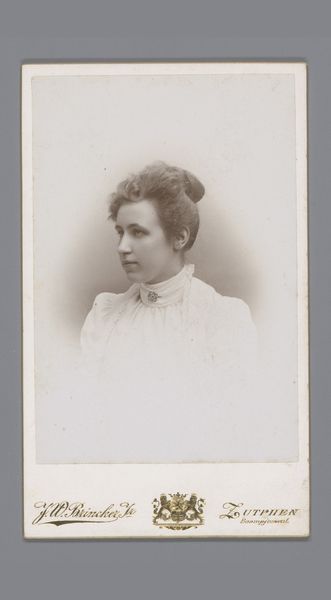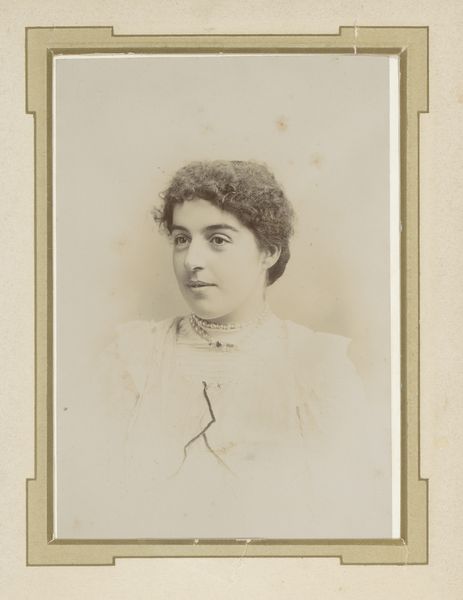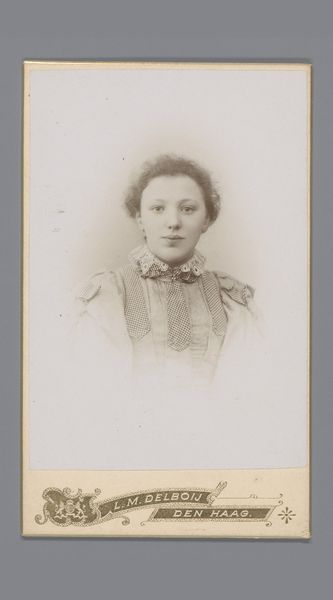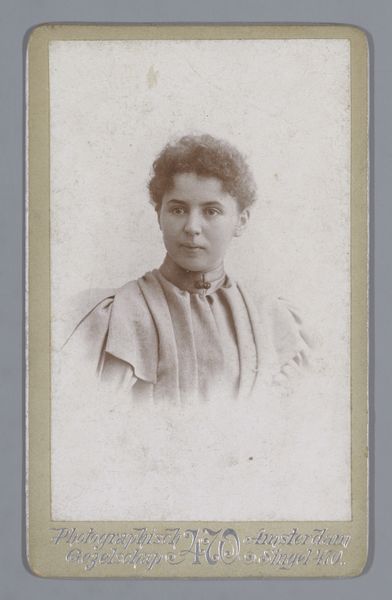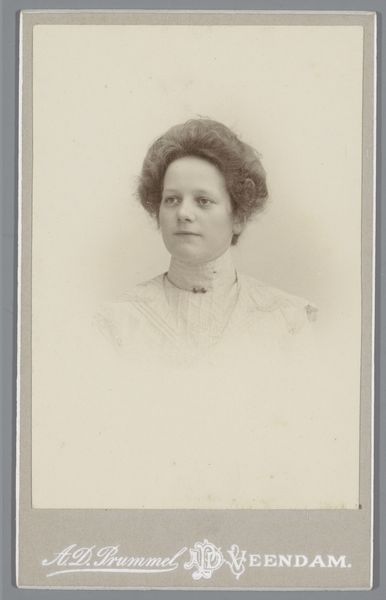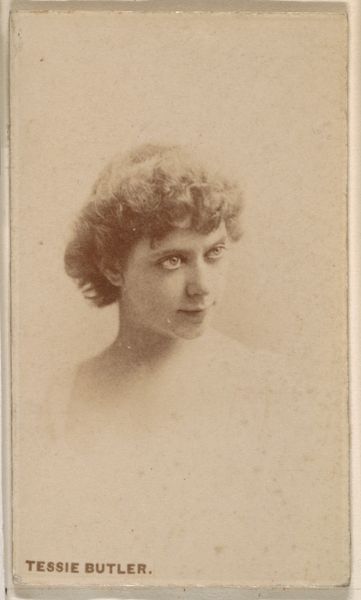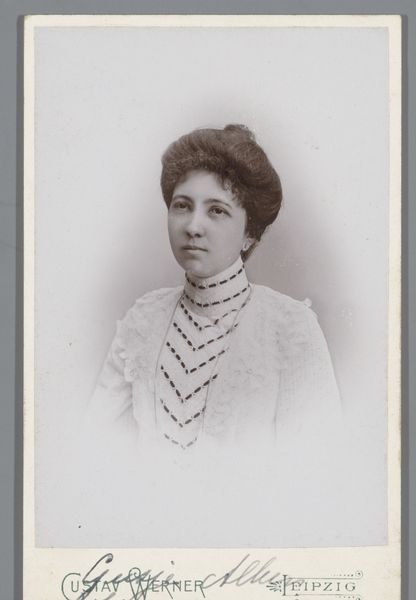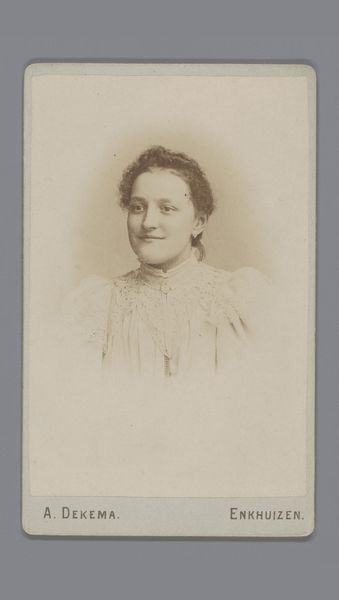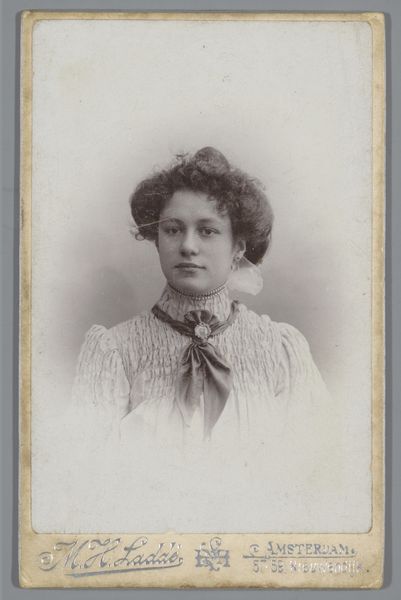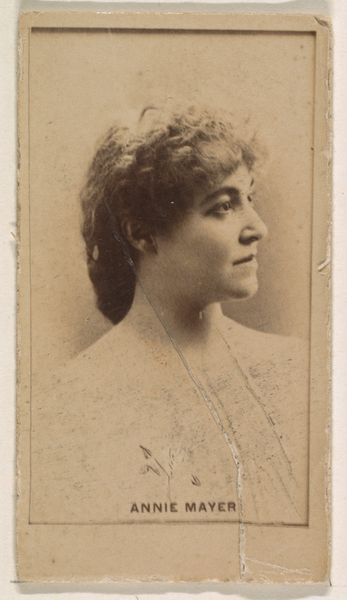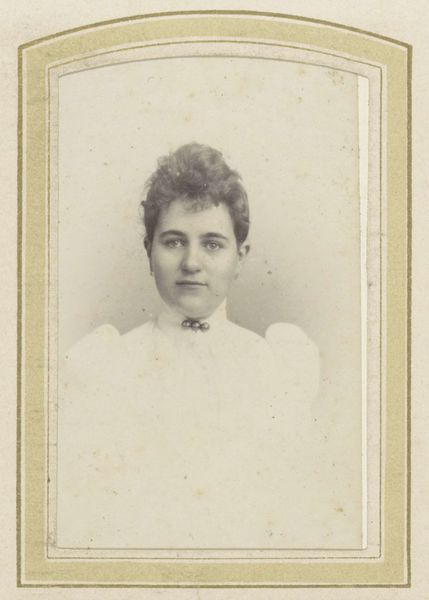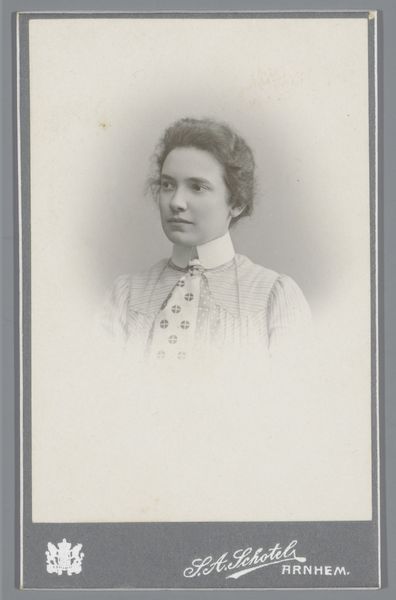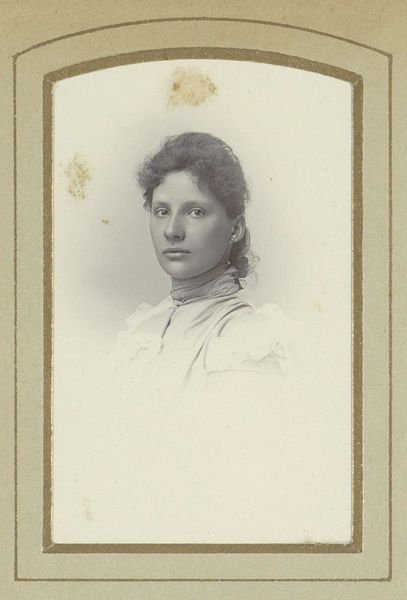
photography, gelatin-silver-print
#
portrait
#
photography
#
gelatin-silver-print
#
realism
Dimensions: height 103 mm, width 64 mm
Copyright: Rijks Museum: Open Domain
Curator: The first thing that strikes me about this piece, "Portret van een onbekende vrouw," is this feeling of quiet introspection. It’s almost ghostly in its rendering, all delicate gelatin silver. She's present but also slipping away, like a memory. Editor: You've keyed in on something vital here. This work, a photograph by H.C. de Graaff dated between 1882 and 1922, functions precisely within a tension between presence and absence. Studio portraiture in this period, particularly cartes de visite, aimed to fix likeness, yet its very medium introduces distance. Who was this woman, beyond the image we possess? Curator: It does feel like holding a ghost, doesn't it? Her direct gaze is almost unnerving; I feel this responsibility to fill in her story, give her life beyond this pale picture. The way the light catches her lace collar makes me imagine a life filled with small domestic moments and hushed conversations. Total projection, of course, but the photo invites it. Editor: The material conditions of photographic production bear on that projection. The carte de visite trade created a boom in photographic studios; these were, in many ways, proto-mass media images. Yet, that "Realist" impulse complicates a purely commercial reading; the aspiration to truth, coupled with widespread circulation, shapes how the sitter understood herself and wished to be seen. We're talking about an emerging visual culture. Curator: Right, and she participates so consciously in that visual culture. The fashionable puffed sleeves, the delicate choker—she presents herself with such care! Almost as a romantic ideal rather than a purely truthful rendering. It’s like she's crafting herself into a work of art too, blurring that space between subject and object. Editor: And that’s the persistent tension. What can the image truly tell us beyond the stylistic conventions and material conditions? Perhaps its power rests more in the questions it evokes than the answers it offers, inviting viewers to consider how identities are constructed, maintained, and ultimately, lost through images. Curator: So it goes. Each time a new pair of eyes gazes on her picture, they paint her history afresh, wouldn't you say? It gives a whole new weight to the idea of seeing. Editor: Absolutely, this small photograph reveals vast layers of social, cultural and personal meaning if we pause to consider it.
Comments
No comments
Be the first to comment and join the conversation on the ultimate creative platform.
